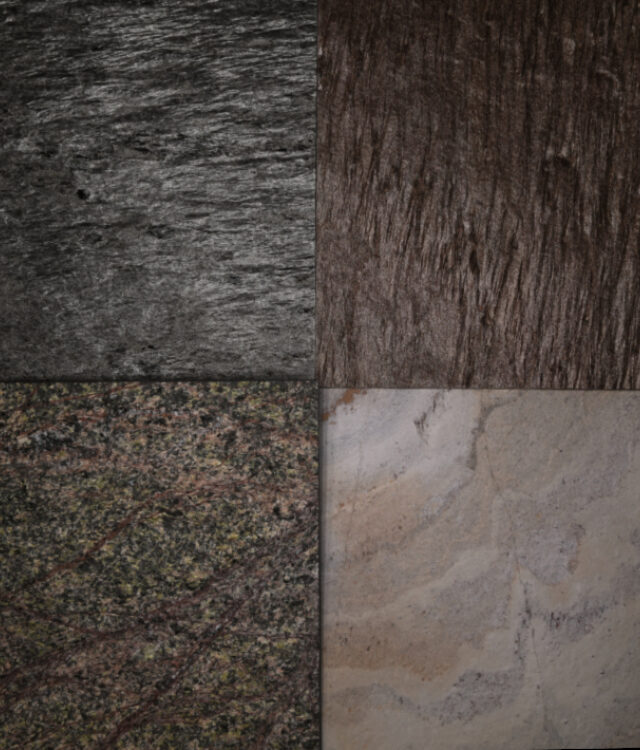Erste Schritte mit Truvis Authentica Creator
In diesem Video erfahren Sie, wie Sie Bilder in der Authentica Creator Software importieren und verarbeiten, um Ihr erstes Oberflächenmodell zu erstellen.
Zuerst, laden Sie die Software “Authentica Creator” herunter und installieren Sie diese auf Ihrem Mac oder PC.
Sammeln Sie Ihre TIFF-Bilder in einem Ordner auf Ihrem Computerlaufwerk. Stellen Sie sicher, dass diese identische Abmessungen, Zuschnitt und Ausrichtung haben.
Klicken Sie in Authentica Creator auf die Registerkarte "Bilder" und wählen Sie dann "Bilder öffnen". Suchen Sie den Ordner auf Ihrem Computer, der die 48 TIFF-Bilder Ihrer Aufnahme enthält, nicht die einzelnen Bilder. Sie können nun eine Vorschau Ihrer importierten Bilder anzeigen.
Erstellen Sie ein Oberflächenmodell
Klicken Sie dann auf "Material erstellen". Definieren Sie einen Szenennamen und wählen Sie Ihr Gerät aus. Wenn Sie den Scope D50 mit sichtbarem Licht verwenden, wählen Sie Scope D50 VIS. Wenn Sie mit ultraviolettem oder infrarotem Licht fotografieren, wählen Sie das Scope D50 UV oder IR entsprechend. Klicken Sie dann auf "Erstellen".
Der Vorgang der Szenenerstellung kann einen Moment dauern und hängt von der Grösse der importierten Bilder sowie der Rechenleistung Ihres Computers ab. Während dieser Zeit reagiert Authentica Creator nicht auf weitere Befehle.
Ihr Oberflächenmodell ist nun fertig und kann unter dem Reiter "Szene" betrachtet werden. Es stehen 6 Funktionen zur Interaktion mit dem Oberflächenmodell zur Verfügung.
Mit dem Glühbirnensymbol können Sie den Einfallswinkel des Lichts steuern. Mit dem "Handwerkzeug" können Sie das Objekt verschieben und positionieren. Mit dem "Rechteck"-Symbol können Sie in den Vollbildmodus wechseln. Mit den Zoom-Schaltflächen oder dem Scrollrad Ihrer Maus können Sie das Objekt vergrössern oder verkleinern. Um die ursprünglichen Kameraeinstellungen wieder herzustellen, klicken Sie auf die Schaltfläche "Home".
Illumination and scenes options
For all input fields it’s possible to either type a value directly in the field, use the up and down keys of the keyboard or scroll up and down with the mouse to increase/decrease the value of the setting.
You can add four different types of virtual light to a scene. You can add as many light sources as you like, each with a different position or incidence angle.
Directional lights are virtual light sources infinitively far away and beams to a defined direction. You can set the light direction by using the light bulb or you can click into the circle and change the angle of incidence of the light. Choose an intensity value of your choice.
A Point light radially emit light from one point evenly. Unlike the directional light, the point light can be placed closer or further away from the object. The position of the point light is set by choosing x, y and z values.
Spot lights are similar to point lights but only emit light within a specific solid angle. This angle can be specified by entering a number between 0 and 180. The Penumbra setting defines how sharp the light should be within a range of 0 and 1. Set the direction of the spot light by using the orange positioning circle. The position of the spot can be set by using the x, y and z values.
An Ambient light illuminates your scene evenly from all directions. You can set the light as bright as you want.
In the “Objects” panel, open “Material”. Here, you can modify the intensity of the entire material. You can also modify the intensity of the diffuse reflection. With the map intensity you can regulate the intensity of the spatially resolved specular reflection. With the Global Intensity you can set the intensity of the specular reflection for the whole material. Here you can regulate the Sharpness of the specular reflection.
Another great function is Surface Enhance. It removes all colours and allows you to examine the surface details of your object without being distracted by colour or material information.
If you want to remove the background around the object, you can add here a mask which you created in a graphic software.
In the Geometry tab you can resize, position and arrange all objects by using the x, y and z values., Later you will learn how to add several objects to your scene.
In the background tab you can select the background color of your choice for the entire scene.
How to manage scenes and projects
In Authentica Creator, you can create several projects where your objects and scenes are saved in subfolders.
Objects are the 48 photos processed by Authentica. The objects themselves always remain in their original state and cannot be changed. If you want to view an object or change the light settings, you can open the created scene. Alternatively, create a new empty scene here and add an object.
If you would like, you can also add multiple objects to a scene. When you insert several objects, they are placed on top of each other. Now go to the tab "Objects", "Geometry". You can define the size, position and angle of each object individually.
Always remember to save your changes in the scenes - there is no automatic saving.







